QE hosted some 42 robotics teams at this year’s Battle of Barnet – including three who flew in from Türkiye!
The VEX IQ robotics competition in the Shearly Hall not only saw 400 young people taking part, but also involved more than 70 volunteers, including many QE staff and sixth-formers.
It came after a busy term of action for QE’s robotics teams, including visits to competitions at Coventry and Stowe School in Buckinghamshire.
Award-winners in Barnet included QE’s own Gear Squad, who took the Innovate Award, as well as Team Omega, who won the coveted Design Award.
Head of Digital Teaching & Learning Michael Noonan said: “The Battle for Barnet is now well established as one of the largest regional VEX tournaments – and this year’s event certainly drew in the crowds from near and far! Well done to our boys on their performance and many thanks to the volunteers, who did such a great job both before and during the event.
“These large-scale competitions provide QE students and other teams with the opportunity to qualify for four awards, which can them secure a place at the VEX National Championships in Telford next year, and potentially advancement to the VEX World Championship in the United States in April.”
Mr Noonan thanked OE Husain Alaswad (2017–2025), 2025 VEX Volunteer of the Year, who was Head Referee: “His expertise was instrumental in the success of the event.”
He also singled out Avi Goel, of Year 11, who “dedicated weeks of effort alongside his talented team to ensure an outstanding AV set-up, great music, and exhilarating lighting”.
QE’s Battle for Barnet was this year given the theme of Space Battle.
The event comprised the:
- Robot Skills Challenge: A single robot is evaluated on both autonomous and driver-controlled performance.
- Teamwork Challenge: two teams collaborate during a 60-second match to score as many points as possible by completing tasks such as stacking game objects;
The competition’s Teamwork Champions, were named as HABS Hornets and VEX Ninjas. VEX Ninjas included Alessandro Yu Spagnolo from Year 8 and his twin sister, who attends Queen Elizabeth’s Girls’ School.
QE competitor Vidyut Naryan said: “It was a really great experience, easily the best competition in the UK. Our Team, Gear Grinders, achieved 3rd in ‘skills’ with a score of 95, including 24 on ‘autonomous’.”
Vidyut’s fellow Year 8 pupil, Ehan Rattani, added: “Me and the rest of the Fusion Force team learnt a lot and enjoyed showcasing our skills at such a brilliantly organised competition.”
QE’s four older robotics teams have also been performing well in the V5RC competitions – one at Stowe, one in Coventry and two at the John Warner School in Hoddesdon.
Year 12’s Team Hybrid were Tournament Champions in the second John Warner School competition, were losing finalists at Stowe, and picked up no fewer than three Design Awards, as well as a Robot Skills Award.
Year 10’s Team Nova shone brightly, too, winning a Build Award at Coventry, where another Year 10 team, Z-TBC, reached the semi-finals.
- Click on the thumbnails to view the images.


 Paarth’s AI-powered app for visually impaired people took first prize among UK entrants in Intel’s AI Global Impact Festival 2025.
Paarth’s AI-powered app for visually impaired people took first prize among UK entrants in Intel’s AI Global Impact Festival 2025.
 Hardik’s essay was one of only five entries to reach the final in the Discover Economics contest, which was backed by the Royal Economic Society.
Hardik’s essay was one of only five entries to reach the final in the Discover Economics contest, which was backed by the Royal Economic Society. The final of the competition was held at accountants’ KPMG’s offices. Hardik, who is in Year 12, gave a ten-minute presentation, which was followed by a five-minute question-and-answer session with the judges, who were drawn from Government policy bodies as well as the Financial Times, who sponsored the competition, together with KPMG UK.
The final of the competition was held at accountants’ KPMG’s offices. Hardik, who is in Year 12, gave a ten-minute presentation, which was followed by a five-minute question-and-answer session with the judges, who were drawn from Government policy bodies as well as the Financial Times, who sponsored the competition, together with KPMG UK.
 Delivered at the Royal Geographical Society in Kensington, London, it proved a revelation to many. Year 13’s Hitarth Patel said: “I found the extent to which inequality is prevalent within the UK astonishing,” and Shravan Jayaprakash, of Year 12, described the lecture as “an exhilarating experience which broadened my perspectives about many issues in our country today, especially the widening inequality we face”.
Delivered at the Royal Geographical Society in Kensington, London, it proved a revelation to many. Year 13’s Hitarth Patel said: “I found the extent to which inequality is prevalent within the UK astonishing,” and Shravan Jayaprakash, of Year 12, described the lecture as “an exhilarating experience which broadened my perspectives about many issues in our country today, especially the widening inequality we face”. He has spoken on radio, featured on television and written newspaper articles. He is the author of more than 20 books, including two published in 2024 – Seven Children: Inequality and the Geography of a Failing State, and Peak Injustice: Solving Britain’s Inequality Crisis – and one which came out this year, The Next Crisis: What We Think about the Future.
He has spoken on radio, featured on television and written newspaper articles. He is the author of more than 20 books, including two published in 2024 – Seven Children: Inequality and the Geography of a Failing State, and Peak Injustice: Solving Britain’s Inequality Crisis – and one which came out this year, The Next Crisis: What We Think about the Future.
